Art Talks
Cubism in the Philippines: A Journey Through Modernism
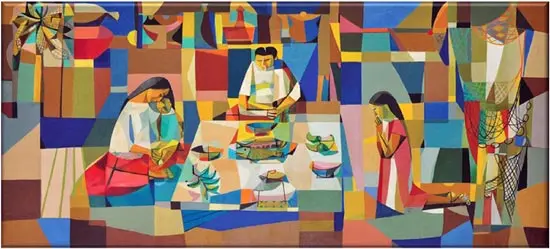
Cubism, one of the most influential art movements of the 20th century, revolutionized the way artists perceived and represented reality. Originating in Europe with pioneers like Pablo Picasso and Georges Braque, Cubism’s impact extended globally, influencing countless artists and movements. In the Philippines, Cubism found a unique expression, blending with the country’s rich cultural heritage and evolving artistic traditions. This article explores the history, development, and impact of Cubism in the Philippine art scene.
The Origins of Cubism
Cubism emerged in the early 1900s as a radical departure from traditional perspective in art. By deconstructing objects into geometric shapes and presenting multiple viewpoints simultaneously, Cubist artists challenged conventional notions of space and form. This avant-garde approach resonated with Filipino artists, particularly as the country was experiencing significant social and political changes.
Early Influences and Adaptation
The introduction of Cubism to the Philippines can be traced back to the early 20th century, when Filipino artists were increasingly exposed to European modernist movements. Studying abroad and engaging with international art communities, these artists brought back new ideas and techniques that would eventually shape the local art scene.
Victorio Edades, often regarded as the father of modern Philippine art, was among the first to introduce Cubist elements into his work. Influenced by his studies in the United States and exposure to modernist trends, Edades’ paintings broke away from the academic realism that dominated Philippine art. His works, characterized by distorted forms and bold compositions, laid the groundwork for the acceptance of Cubism and other modernist styles in the country.
The Rise of the Modernists
The 1950s and 1960s marked a significant period for modern art in the Philippines, with the rise of the so-called “Neo-Realists” and other progressive art groups. Artists like Cesar Legaspi, Vicente Manansala, and Hernando R. Ocampo played pivotal roles in the development and popularization of Cubism in the Philippines.
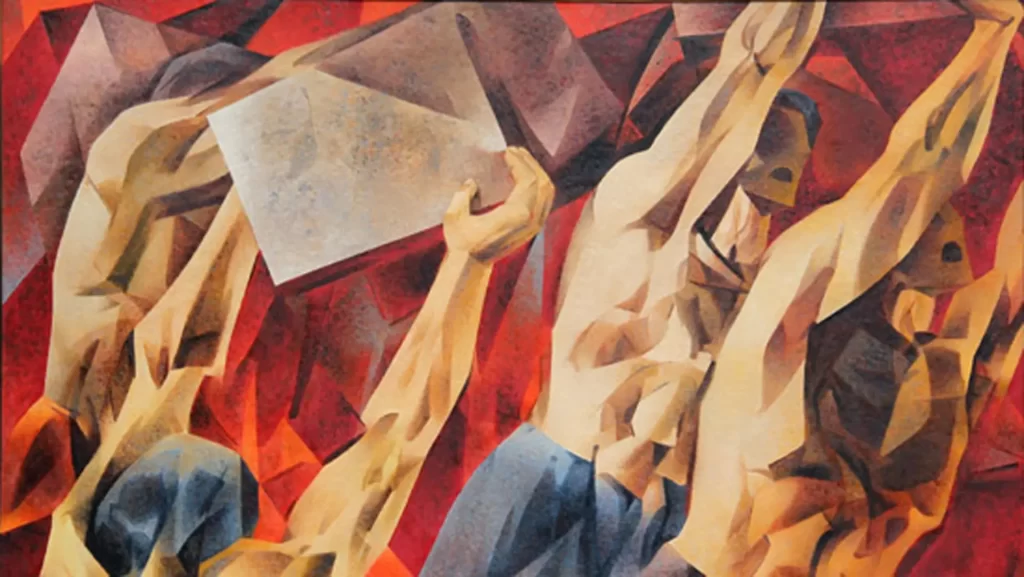
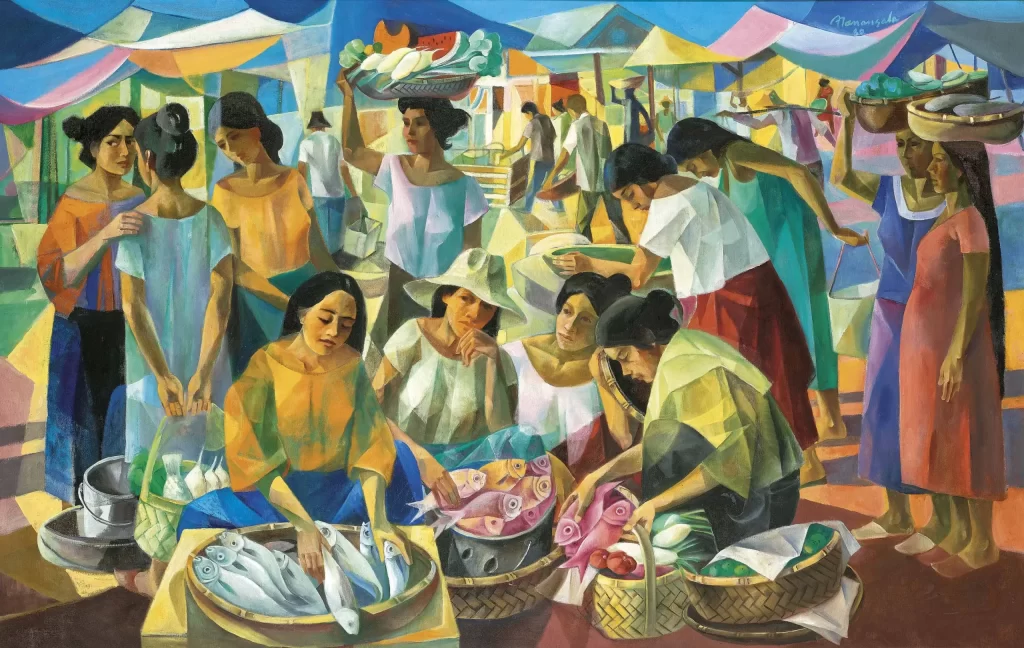
Vicente Manansala, in particular, is renowned for his distinctive style of “Transparent Cubism.” By blending the traditional elements of Cubism with Filipino themes and subject matter, Manansala created a unique visual language that resonated with local audiences. His works often depicted scenes of everyday life, such as markets, rural landscapes, and urban settings, rendered in fragmented yet harmonious compositions.
Cesar Legaspi’s interpretation of Cubism also stands out for its emphasis on social commentary. His paintings frequently addressed the struggles and hardships of the Filipino people, using Cubist techniques to convey emotional depth and complexity. Legaspi’s works, characterized by their bold colors and dynamic forms, continue to be celebrated for their powerful visual impact and socio-political relevance.
Contemporary Cubism in the Philippines
Cubism’s influence persists in contemporary Philippine art, with many artists continuing to explore and reinterpret the movement in innovative ways. The legacy of pioneers like Edades, Manansala, and Legaspi has paved the way for new generations of artists to experiment with Cubist techniques and integrate them into their own artistic practices.
Today, Filipino artists like Rodel Tapaya, Elmer Borlongan, and Cid Reyes are among those who draw inspiration from Cubism while incorporating contemporary themes and perspectives. Their works reflect a deep engagement with both the formal aspects of Cubism and the cultural and social contexts of the Philippines.
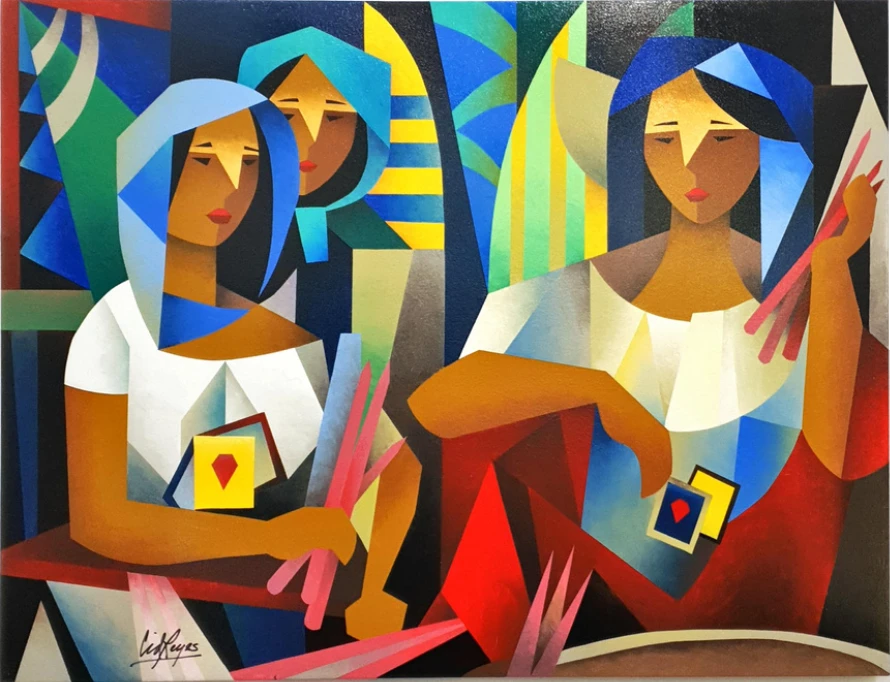
2022, Acrylic on Canvas, 36″ x 48″
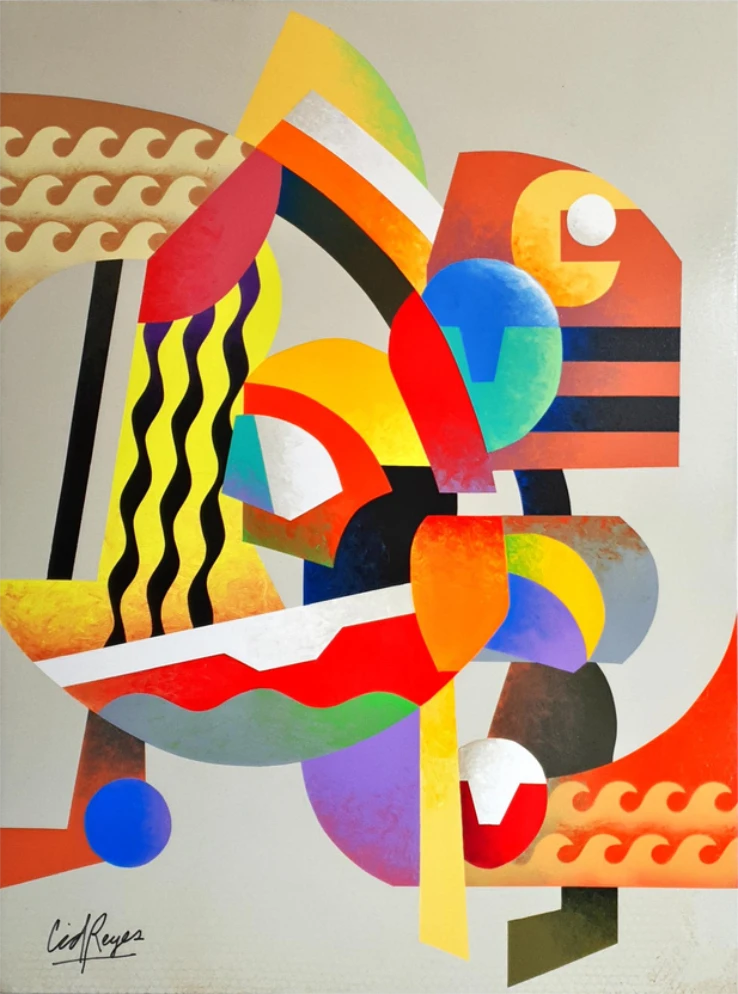
2020, Acrylic on Canvas, 48″ x 36″
Cubism’s journey in the Philippines is a testament to the adaptability and resilience of the country’s artistic traditions. By embracing and transforming this influential movement, Filipino artists have contributed to a rich and diverse modern art landscape. As Cubism continues to inspire and evolve, it remains a vital part of the Philippines’ artistic heritage, reflecting the nation’s ongoing dialogue with global art movements and its own unique cultural identity.
Written by Cherry Fulgar
For more information, contact Imahica Art at +63 917 894 5646, or email thegallery@imahica.art
Imahica Art is a contemporary art gallery in the Philippines, showcasing works by both emerging and established artists. As one of the newer venues in the Philippines, it significantly enhances the diversity and appreciation of contemporary art collections and investments, both locally and globally. Located at the intersection of Lee Street and Shaw Boulevard in Wack-Wack, Mandaluyong City, the gallery is fully accessible and open to the public for free unless otherwise stated.

